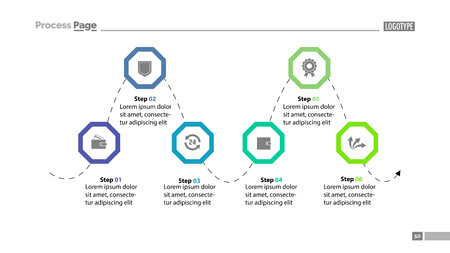1. The Rise of Advanced Vehicle Technology
The commercial auto insurance industry in the United States is experiencing a major transformation thanks to emerging technologies. From telematics and connected vehicles to autonomous driving systems, these innovations are not only changing how businesses manage their fleets but also how insurers assess risk and set premiums.
Telematics: Data-Driven Decisions
Telematics refers to technology that tracks and transmits vehicle data—like speed, location, braking habits, and fuel usage—in real time. Commercial fleet operators use telematics devices or apps to monitor drivers’ behavior, improve efficiency, and reduce accidents. For insurance companies, this means access to accurate, up-to-date information that helps them offer personalized pricing and rewards for safe driving. It’s a win-win for both fleet managers and insurers.
Connected Vehicles: A Smarter Network
Connected vehicles take things a step further by enabling communication between vehicles (V2V) and with traffic infrastructure (V2I). This connectivity helps prevent collisions, optimize routes, and maintain vehicle health. Insurance providers benefit from the increased safety features and reliable data streams that can help reduce claim frequency and costs.
Key Benefits of Connected Vehicles
| Feature | Impact on Fleets | Impact on Insurance |
|---|---|---|
| Real-time diagnostics | Fewer breakdowns, better maintenance | Lower risk, fewer claims |
| Accident avoidance systems | Safer driving environment | Potential for premium discounts |
| Location tracking | Efficient routing & theft recovery | Faster claims processing |
Autonomous Driving Systems: The Road Ahead
The arrival of self-driving technology in commercial fleets is beginning to reshape how companies think about safety and liability. Autonomous systems can reduce human error—a leading cause of accidents—and promise greater consistency in operation. As more semi-autonomous trucks and delivery vans hit American roads, insurers are developing new ways to evaluate risks unique to these advanced vehicles.
The Evolving Relationship Between Tech and Insurance Standards
Together, these technologies are setting new industry standards for commercial auto insurance. Insurers now look beyond traditional factors like driver age or vehicle type; they consider real-world performance data and tech-driven safety features. Businesses that embrace these innovations may enjoy lower premiums and safer fleets as the landscape continues to evolve.
2. Changing Risk Assessment and Pricing Models
Emerging technologies are transforming how commercial auto insurance companies assess risks and determine premiums. With advancements in telematics, real-time data collection, and predictive analytics, insurers can now get a much clearer picture of driver behavior and vehicle usage. This shift is making risk assessment more accurate and personalized than ever before.
How Real-Time Data Impacts Insurance
Telematics devices installed in commercial vehicles capture real-time information such as speed, braking habits, routes taken, and even idle times. This data helps insurers identify safe drivers and those who might pose higher risks on the road. Instead of relying only on broad factors like age or driving history, insurance companies can use this live data to create a custom profile for each driver or fleet.
Benefits of Predictive Analytics
Predictive analytics takes all that real-time data and uses it to forecast future outcomes. By analyzing patterns in driving behavior, accident history, and even weather conditions, insurers can:
- Better predict the likelihood of accidents
- Set premiums that reflect actual risk levels
- Spot fraud or suspicious claims faster
Comparison: Traditional vs. Technology-Driven Risk Assessment
| Traditional Model | Technology-Driven Model |
|---|---|
| Based on general demographics and past records | Uses live data from telematics and advanced analytics |
| Premiums set annually or semi-annually | Premiums can be adjusted dynamically based on current behavior |
| Limited insight into daily driving habits | Deep understanding of every trip and event on the road |
Smoother Claims Management
With access to real-time accident data, insurers can process claims more quickly and accurately. For example, telematics can automatically send crash data after an incident, reducing paperwork and speeding up repairs. This efficiency helps businesses get their vehicles back on the road faster while ensuring fair settlements for everyone involved.

3. Impact on Claims Process and Fraud Prevention
How Emerging Technologies Are Transforming the Claims Experience
New technologies are making a big difference in commercial auto insurance, especially when it comes to handling claims and preventing fraud. Two standout innovations are AI-powered claims processing and dashcam video verification. These tools are helping both insurance companies and policyholders save time, money, and stress.
AI-Powered Claims Processing
Artificial Intelligence (AI) is changing the way insurance companies process claims. Instead of waiting days or weeks for paperwork to be reviewed by humans, AI systems can quickly analyze data, assess damages, and even estimate repair costs within minutes. This means businesses can get their vehicles back on the road faster after an accident.
Benefits of AI in Claims Handling
| Benefit | Description |
|---|---|
| Faster Settlements | AI speeds up claim approval and payment, reducing downtime for businesses. |
| Consistency | Automated processes ensure each claim is handled fairly and by the same standards. |
| Error Reduction | AI minimizes human mistakes that could delay claims or cause disputes. |
| Cost Efficiency | Quicker resolutions lower administrative expenses for insurers and policyholders alike. |
Dashcam Video Verification
Dashcams have become a popular tool in commercial fleets across the U.S. These cameras record real-time footage during trips, providing clear evidence if an incident occurs. When a claim is filed, dashcam footage helps clarify what really happened, often speeding up the investigation process.
Main Advantages of Dashcam Verification
- Accurate Evidence: Video records provide unbiased accounts of events, reducing disputes over fault.
- Fraud Reduction: Having footage discourages staged accidents or false claims because everything is on camera.
- Simplified Claims: Insurers can quickly review videos to confirm details, making the whole process smoother for everyone involved.
The Role of Technology in Fighting Fraud
Insurance fraud is a serious issue that costs U.S. businesses billions every year. With AI and dashcams working together, fraudulent activities like fake injury claims or staged accidents become much harder to pull off. AI systems can spot unusual patterns or inconsistencies in claims data, while dashcam footage gives solid proof of what actually occurred. By catching fraud early or stopping it before it happens, these technologies help keep insurance premiums fairer for all companies.
4. Legal, Regulatory, and Ethical Challenges
The Evolving Regulatory Landscape
As emerging technologies reshape commercial auto insurance, laws and regulations in the U.S. are also changing rapidly. Both state and federal agencies are working to keep up with innovations like telematics, autonomous vehicles, and AI-powered claims processing. However, rules can vary widely by state, making compliance a challenge for insurers and fleet operators with vehicles in multiple locations.
| Technology | Key State Regulations | Federal Oversight |
|---|---|---|
| Telematics | Data privacy requirements; usage-based insurance rules | FTC guidelines on consumer data protection |
| Autonomous Vehicles | Testing permits; operator licensing; minimum liability coverage | NHTSA safety standards; DOT pilot programs |
| AI Claims Processing | Transparency laws on algorithm decisions (in some states) | No specific federal oversight yet, but being discussed |
Ethical Considerations in Commercial Auto Insurance
The use of technology raises important ethical questions. For example, telematics collects detailed driving data—so how do insurers ensure this information is used fairly and kept private? When AI is used to set premiums or process claims, companies must be careful not to introduce bias or discriminate against certain groups. Insurers need transparent policies and clear communication with their customers about what data is collected and how it’s used.
Major Ethical Concerns:
- Data Privacy: Safeguarding driver and vehicle data from misuse or breaches.
- Algorithm Bias: Making sure AI systems don’t unfairly penalize drivers based on inaccurate or biased data.
- Transparency: Clearly explaining how technology impacts rates, coverage decisions, and claims outcomes.
Liability Questions Around New Technologies
The arrival of self-driving trucks and advanced driver-assist features has created new questions about who’s responsible when something goes wrong. Is it the vehicle owner, the manufacturer, the software provider—or a combination? These issues are still being debated in courts and legislatures across the country. For now, insurers often have to navigate these uncertainties case by case.
| Scenario | Potential Liable Parties | Main Questions Raised |
|---|---|---|
| Autonomous vehicle accident | Vehicle owner, software company, manufacturer | Who was “in control” at the time of the crash? |
| Error in AI-driven claim denial | Insurance company, software vendor | Was the decision fair and explainable? |
| Breach of telematics data | Insurer, third-party tech provider | Were proper safeguards in place? |
Navigating Uncertainty Together
The legal, regulatory, and ethical landscape for commercial auto insurance is still catching up with technology. As new challenges arise, ongoing collaboration between regulators, insurers, tech providers, and customers is key to building a safer and more transparent industry.
5. The Road Ahead: Opportunities and Challenges
As emerging technologies continue to reshape commercial auto insurance, everyone involved—carriers, agents, and businesses—must adjust to new realities. Let’s explore what these changes mean for each group and how they can navigate both the advantages and the obstacles.
Opportunities for Carriers, Agents, and Businesses
| Group | Opportunities |
|---|---|
| Insurance Carriers | – Use real-time data from telematics for better risk assessment – Streamline claims with AI and automation – Offer personalized pricing based on driving behavior |
| Agents & Brokers | – Provide more tailored coverage options – Use digital tools to improve customer service – Access new markets through tech-driven products |
| Insured Businesses | – Get potential premium discounts for safe driving – Benefit from faster claims processing – Use fleet management tech to reduce accidents and costs |
Challenges Along the Way
- Data Privacy & Security: With more connected vehicles and telematics, protecting sensitive information is a top concern.
- Technology Costs: Upgrading fleets or adopting new software can be expensive for businesses.
- Changing Roles: Agents must learn new skills as automation handles more routine tasks.
- Regulatory Uncertainty: Laws around data usage and autonomous vehicles are still evolving, making compliance tricky.
- Adoption Gaps: Not all companies or drivers are ready to embrace new technologies at the same pace.
Navigating a Rapidly Changing Landscape
The shift toward smarter, tech-driven commercial auto insurance calls for ongoing adaptation. Insurers need to invest in innovation and training, agents should focus on building relationships while leveraging digital tools, and businesses can gain an edge by staying informed about technological trends. Success will depend on balancing these opportunities with careful attention to the challenges ahead.


